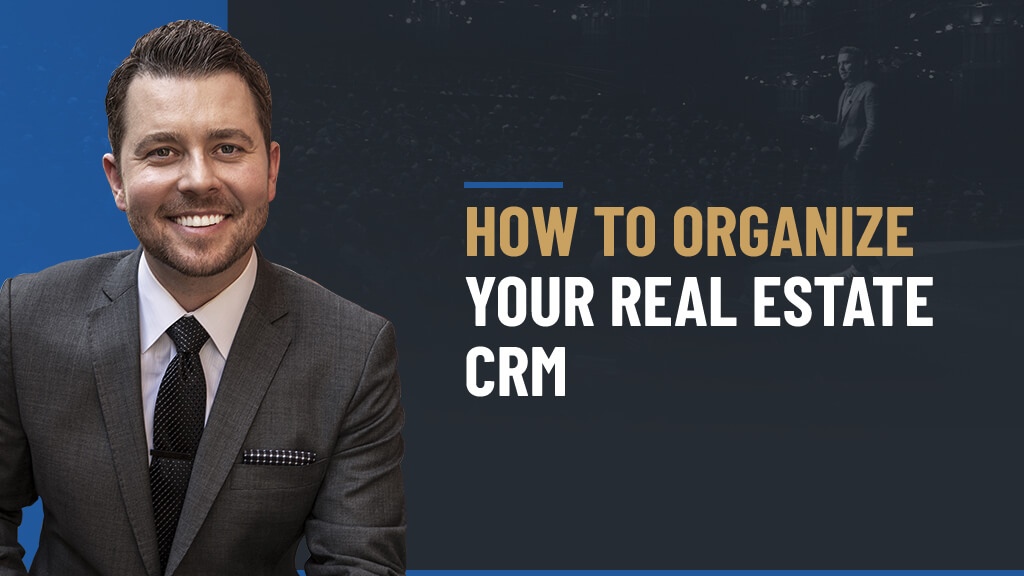Real estate coach and trainer Travis Robertson brings you part 3 in his series on real estate CRM tools. You now know why you need a real estate CRM and have hopefully implemented one in your own real estate business. Now follow along as Travis explains how to organize your CRM in a way that makes the most sense and will eventually lead to making more money!
HOW TO ORGANIZE YOUR REAL ESTATE CRM
Knowing how to organize your database and the contacts in the database so you can market them more effectively is critically important. However, it’s also important to note that the majority of the information out there on how to organize your database is dead wrong. It’s actually terrible advice because it forces you to think of people in a way that you don’t normally think of people.
A-B-C, 1-2-3
The traditional advice is the ABC method, right? You put people into categories of A leads. where A people are the most important people to you with B being second most important and C being third most important. Here’s the problem: what’s the difference between one type of A and another type of A? Should you put past clients in A or do you put your current clients in A? Do you put people who referred you business in A? All the sudden what you start to realize is that A has no specific meaning; it’s arbitrary. The truth is, we don’t think of people in terms of letters. You don’t meet somebody and go “oh, she’s an A” (or maybe you do), but under normal circumstances that’s not how you categorize relationships with people.
CATEGORIZE BY RELATIONSHIPS
How do you categorize relationships? Use relational terms, like friend, sphere of influence, lead, client, past client, seller lead, or buyer lead. That’s how we categorize people when speaking about them or talking with other people about people that we know. We don’t do it based off letters or numbers. If you try to organize your relationships using letters or numbers, it’s going to get frustrating, it’s going to get cluttered, and ultimately you’re just going to have a group of people that mean nothing to you and you lose the ability to market differently to those different groups of people.
HOW-TO
Organize your databases around the relationships that you have with people. Here’s another problem with the A-B-C method of organizing: people can’t be in more than one categories. When organizing people relationally, if you have a good database platform like we talked about in part two of this series, you can create multiple groups for people and put people into one or more of those groups. Here is a great example: you may have people that are friends and past clients, or maybe past clients and they’ve given you referrals at some point in the relationship. Those people qualify to be in more than one group.
CONTEXTUAL RELATIONSHIPS
What you want to be able to do is not just put people into one strict, specific category but be able to organize them into multiple groups based off the contextual relationship that you have. Why do you want to organize based off relationships? It gives you the ability to market to them specifically based off those types of relationships, also known as context marketing. A great example of this is past client parties. If you have a past client group in your CRM, it becomes very easy to send out marketing specific to that past client group.
WHERE TO START
Start small. You can always grow from there. Think of the key relationships you have in your business, create just those groups and try to put as many of your contacts into one or more of those groups as possible before adding additional groups or additional categories to your database. The more categories you add, the more complex or granular or detailed oriented your database becomes and the harder it becomes to maintain. Here’s where you can start: create a group for buyer leads and seller leads and past clients and current clients. That will get you started with a lot of different people and putting them where they need to be so that you can ultimately market to them differently down the road.
WHEN TO EXPAND
The last question is this: how do you know when it’s time to add a new category? Here’s my question for you: are you going to market to those people differently? If you’re not going to market any differently to the people who’ve given you one lead versus the people who’ve give you multiple leads, why break it down? It’s just going to create more work for you and ultimately your team if you’re growing a team.
What you want to do is keep it simple and only expand the groups if it makes sense from a marketing or messaging perspective. The power in your database is tied up in the relationships that you have with people. If your data base isn’t organized by those relationships, you can’t possibly bring the value to those relationships that you need to bring in order to make money that you want to make. Instead of doing the A-B-C 1-2-3, start thinking in terms of the relationships you share with people and organize your contacts accordingly.



